I want to discuss a topic that effects all of us at one time or another, and that is—eating in restaurants. So I’m calling this “Restaurant Survival 101“. :-) Everything I talk about in Beauty Detox is a lifestyle, and it has to be practical and fit into our lives in a manageable way.
Of course, for many of us, we have to eat in restaurants due to social events, work events or travel. We can’t seem to avoid it—it’s inevitable. And it can be fun if you have the right tools. So let’s get the 101 on our choices…
What Are Some Healthy Restaurant Options?
If I know I’m meeting somebody at a restaurant, first of all, I will try to steer the decision in a healthy direction. For instance, I try to pick a restaurant that caters to vegetarian and organic foods.
Do. Your. Research. If the restaurant is not vegetarian, choose something that at least has a lot of options.
I’ve noticed that many Asian or Japanese restaurants can be a good bet. You can always get a sushi roll, a salad or miso soup—just but be sure to ask what the ingredients are, since they tend to use a lot of shellfish and fish sauce (this is true of Asian, Japanese and/or Thai food restaurants). If you can convince them to make a sauce for you without the fish sauce, you’re good!
Other options are brown rice and sautéed mushrooms with Tamari soy sauce (restaurants usually have this lingering around). Don’t be afraid to ask (thinking you’re inconveniencing them). They are there to suit your needs to the best of their ability, so let them!
What About Regular Restaurants?
With a little research you’ll be able to make better choices—even if you’re out with others who insist on dining out where it might not be your first choice.
Food Choices – Good and Bad
Water
The first thing we are asked is, “What do you want to drink?” Obviously we know not to drink soda but we also should ask for no ice with our water. For more in-depth information on why this should be avoided, please check out Radical Beauty!
*Note: Another reason to opt-out of ice, is that many restaurants don’t clean their ice machines and they are really contaminated and full of impurities. Eww!
Ideally, bottled water from a glass or BPA-container is best (no tap water). Some tap water is not as bad as others, but a lot of the time you just don’t know what you’re getting, so that’s always a challenge. Even if you do have regular water with no ice, you are at least avoiding some of the contaminants. More restaurants are offering filtered water, which is great!
If I want something with flavor, I often get herbal tea, like chamomile, mint or rooibos tea (even if the water in the tea is tap water, it’s a small amount).
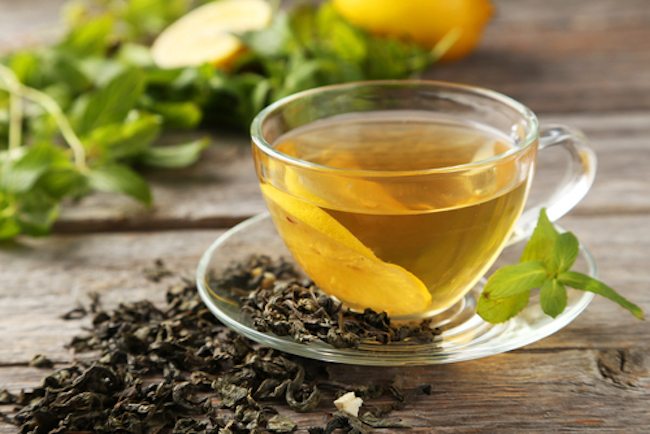
Sipping warm tea is better for digestion than icy beverages!
By drinking tea, you’re sipping—which actually aids in your digestion, because it’s hot. This is a practice in Ayurveda and traditional Chinese medicine, where you sip on small amounts of hot liquid while you’re eating. You can also get hot water and lemon (one of my favorite choices).
What About Alcohol?
If do want to have wine or alcohol, as many of us will want from time to time (it’s a lifestyle after all not a restrictive diet for only a set amount of time!), you can order your drink upfront as you peruse the menu. Alcohol is absorbed through the stomach. So if you have a little bit more of it up front, not only will you probably need less of it overall- you will acidify your food less.
Onto the greens…
Salads
Salads can be a good choice but are a double-edged sword. In my experience, most salads at restaurants have dairy and croutons, which are definitely things we should avoid, among other things.
The salad dressings can also be really bad for you. It’s really hard to find any restaurant making their own salad dressings these days with olive oil or other healthy oils. The dressings you find now are generally packaged and full of additives (unless it’s an organic place that uses just olive oil and lemon juice).
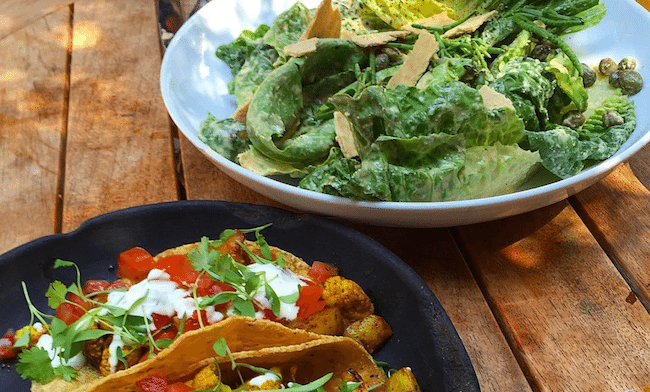
Try to make the best choices and do your research before venturing out! This is a vegan Caesar salad…which you can make on your own from my recipe in The Beauty Detox Foods if you can at home! Not always so easy to find a vegan Caesar in a regular restaurant. :)
Even lemon or vinegar and oil is better. Get creative—craft your own little dressing on the side. Ask for an avocado and cream it up. You can even have them mash it up a little bit for you and add that to your salad. Another trick I use sometimes is to order lentil soup and put it on my salad as a topping.
Don’t hesitate to keep it simple. Vinegar and oil is a great option and most restaurants will at least offer that. This is a great way to avoid vegetable oils that are in most dressings (which are not-so-great for your skin).
Speaking of oily…
Avoid anything fried
We can forget just how prevalent frying is, even at vegan restaurants. Read your menu carefully and ask questions!
We want to avoid fried foods or two reasons: First, the oil is totally destroyed, denatured and put into a form that’s basically unrecognizable by the body. There’s a lot of toxicity which is hard for your body. And this oil is more likely to be stored as fat because your body just doesn’t know how to process it or recognize it.
Fried food (even the same grams of fat in food that is not fried), is more like to actually be stored versus eliminated, processed or utilized.
Second are the inflammatory properties and the inflammatory reactions that occur from frying in cooking temperatures. Crisping to that degree is extremely toxic.
Foods like falafel, are one of those really secret, scary vegan foods because people are like, “Oh, it’s vegan”, “It’s protein” or, “It’s garbanzo beans”. It’s still fried, and very hard for our body to break down. While your body needs a balance of omega-3 and omega-6 fatty acids, the keyword there is balance. I am not a falafel eater and I suggest you avoid them all or at least most of the time.
Choose veggies from the safe list
Let’s say you’re at an Italian restaurant and there’s no entrée that doesn’t have meat or dairy: you can order a bunch of sides and ask them to make a plate (so you feel a bit more normal), rather than having several side dishes cluttering your dining space. :)
What’s great about Mediterranean, Greek, and Italian restaurants, is they often use a lot of healthier options as side dishes, like mushrooms, spinach, or asparagus. You can make a pretty nice meal, especially mushrooms being very dense in protein and vitamin D, and get that real meat-y feeling!
Sometimes, steakhouses have a lot vegetable sides as well like, potatoes, mushrooms, spinach or asparagus—ask them to put them in olive oil. If you put two or three of those veggies together, it’s really a substantial meal.
French restaurants can be more difficult with all the cream and dairy: I usually have to order a plain salad there…and then eat at home afterwords! Mexican is a bit easier where I usually get a big salad with guacamole, beans (as long as the beans aren’t cooked in pork fat), and rice—or just order a veggie burrito or veggie tacos. There really are a lot more healthy choices than most restaurants.
Chipotle is a great example of this, where you can get rice, beans, or avocado and put it on a salad—just leave out the cheese and sour cream.
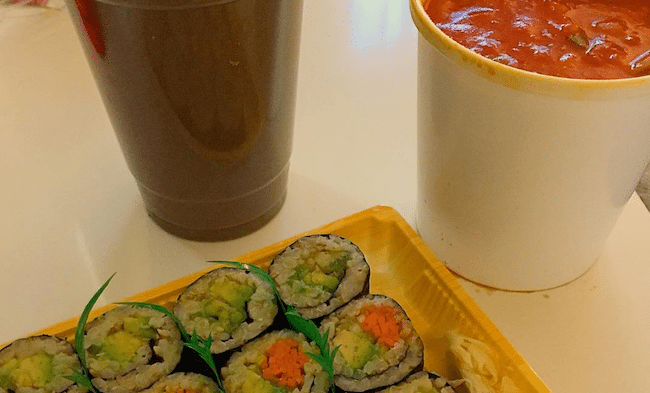
Last minute lunch date? Grab something healthy like some brown rice veg sushi and veggie soup. Who says you can’t be healthy when eating out?! ;)
Another great option is soup and salad, like at Olive Garden. I’ve had to eat there on road trips and you can get a salad with no cheese or croutons on it—it’s bottomless.
You can also choose the minestrone or vegetable soup, which is very fiber-filling and a great option for lunch. Perhaps there’s a lentil or kale soup option.
Even with our vegetable choices, try to be a little bit more choosy by picking from those that are lower on the toxicity list (in terms of pesticides), because it’s probably not going to be organic vegetables—especially if it’s a standard American restaurant.
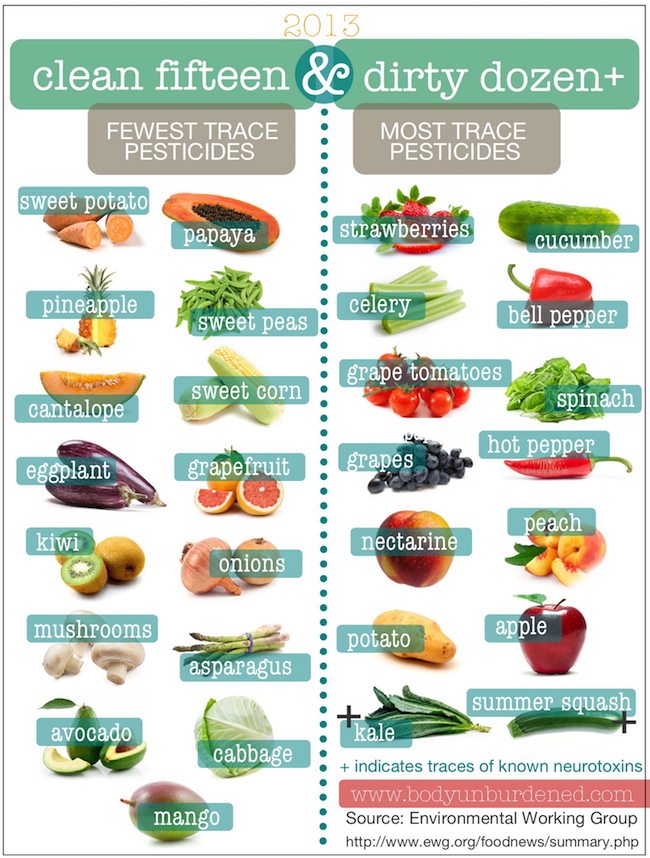
Keep this list handy to keep you on track.
Try not to pick off the dirty dozen if possible. It’s not as big deal as some of the other things we have been talking about here, but some that are really low are avocados, cabbage, asparagus and broccoli, compared to ones like spinach, lettuce, and celery, which are some of the ones that tend to be more sprayed or full of pesticide.
Choose leaner meats
One thing, if you do decide to eat meat in a restaurant, is to think about the way they cook it and the fat being used. Charring (which I’ve talked about on my podcasts), pan-frying or pan-searing meat or fish is a big no-no, because of the concept of “protox” and because a lot of the toxicity in the fish is in the fat.
If you’re broiling the fish or you’re baking the fish, it can help the toxicity drain out, as a lot is held in the fat, but if you’re cooking it in the pan and you’re adding to it, a lot of times you just add a basting with even more butter and more fat. The toxicity isn’t going any where. It all ends up on the plate. This is a much more toxic food prep method.
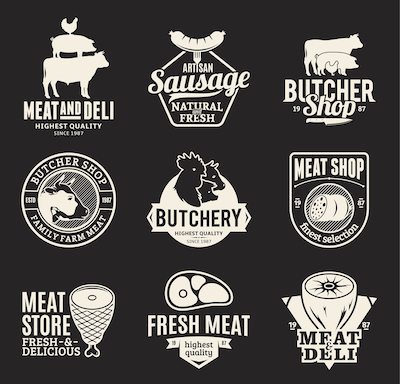
If you choose to eat meat, try to opt for as fresh and organic as possible.
Most places aren’t going to have organic meat or free range meats (which are less toxic but pose a huge threat to the environment in the way of deforestation to clear land for grazing cattle), but instead conventional, which is really high risk, high toxin meat with steroids and antibiotics and more. It’s better to go low-fat if you do want to have meat. Go as lean as possible or cut the fat off of the meat completely.
Also, if you are going to eat meat, watch the ratio: Having a salad first and eating lots of vegetables will help you to not consume the entire enormous portion that some restaurants provide. Remember you don’t have to eat all that meat!!! :) A few ounces is more than enough.
When you eat other things first, you’re going to be more mindful, contributing to your overall health and Beauty.
In Closing…
I hope you Beauties found some good tips for eating out. I want you to be able to live your lifestyle, have fun with your family, friends, and coworkers—while keeping some basic tips in mind that won’t get you too far off track.
It’s not about being self-conflicted, but being balanced. As always, Progress not Perfection. ;)
In love and health,
Kimberly
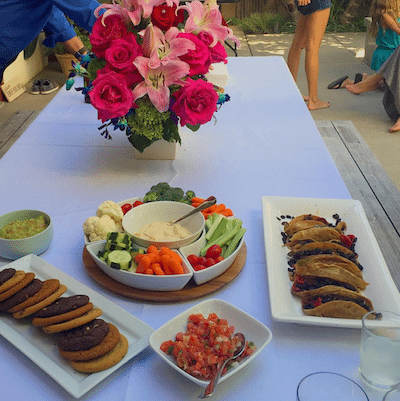
Offer healthy snacks for your family gatherings and help promote healthier food choices. ;) Here are some vegan cookies, hummus and black bean tacos we just had at Bub’s christening party.

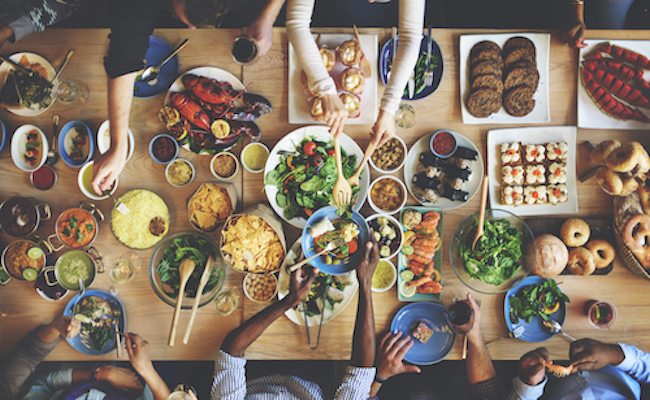

0 Comments